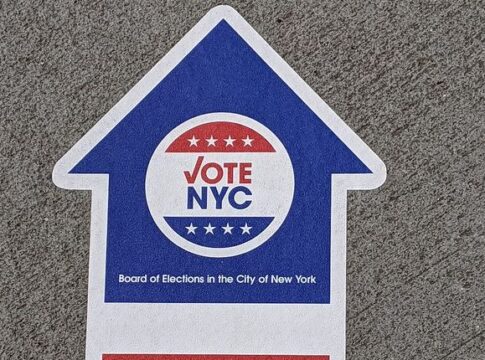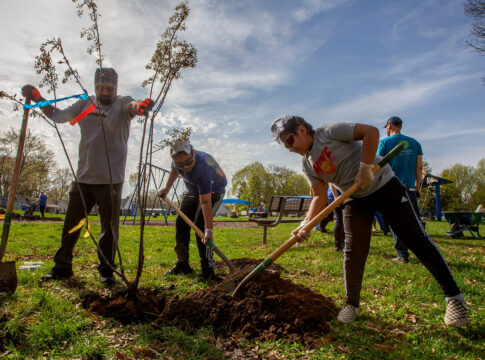
By Sid Sharma
The Cynical Desi
@SidBSharma
In November of 2014, President Obama announced the creation of two new immigration programs aimed at enhancing protections for selected groups of undocumented migrants and their children. Though they have not been implemented due to court challenges, both of these programs, the Deferred Action for Parents of Americans and Lawful Permanent Residents (DAPA) and the enhanced Deferred Action for Childhood Arrivals (DACA), offer a form of legal recognition by the United States government.
Crucially, they provide temporary relief from deportation proceedings and offer a way for migrants to legally work in the country for a set period of time pending renewal.
Sally Kinoshita, Deputy Director at the Immigrant Legal Resource Center in San Francisco, lauded these programs: “DACA and DAPA are about families. They are about creating opportunities and stability for families to remain in the country.”
Both the DAPA and the enhanced DAPA are based on a forerunner program, the original DACA, which was authorized by executive action in 2012. While the fate of the new authorizations remains unresolved, the original DACA program is still active and accepting applicants.
In addition to freeing migrants from the spectre of deportation, the programs also provide participants with a federally issued photo ID that allows legal work in the United States. They are also eligible for receiving social security numbers.
In California, specifically, the direct and indirect benefits include better prospects of finding a higher-paying job with benefits such as sick pay, eligibility for the earned income tax credit, eligibility for Medi-Cal, and the availability of unemployment insurance.
According to a cost benefit analysis of the original DACA program commissioned by the Immigrant Legal Resource Center, the typical applicant can make approximately $14,800 in two years based on an original investment of approximately $1,265 (accounting for the application fee and associated legal costs). Grants and loans from Self-Help Federal Credit Union, Mission Asset Fund, and the City of Oakland can further reduce the financial burden of application.
The study concluded by saying, “The typical DACA applicant can expect that each $1 invested in applying for DACA will yield him/her at least $10 in benefits…The long-term benefits and personal non-economic benefits are even greater.”
LATEST STORIES
The programs, however, face challenges in the courts. Kinoshita explained, “[DAPA and enhanced DACA] are delayed in the courts. They should have been implemented already this year, but they haven’t been started because 26 Republican governors sued and brought this to the federal court system.”

SAALT (South Asian Americans Leading Together), a South Asian advocacy group, called for the quick resolution of the matter. In a statement, they said, “After last week’s Fifth Circuit Court of Appeals’ decision to block these programs, we stand with immigrants and allies across the country in urging the Supreme Court to take up this lawsuit now.”
When asked about these headwinds, Kinoshita was cautiously optimistic, saying, “There is a strong belief among a lot of people that these programs will make it through the court system and be implemented next year.”
In the meantime, Kinoshita advised people to collect requisite documentation, save money for the application fee and legal services and see if they are eligible for the original DACA. “Of those who came forward to apply for the original DACA program,” she said, “about 14% to 15% of them were actually eligible for some other more permanent immigration option, like something that would lead to a green card.”
She is more concerned, however, that the issue is primarily being perceived externally and internally as one chiefly impacting Latin American immigrants. Kinoshita cited a Pew finding that said that not only is there a zero net migration from Mexico, but now India and China are the largest senders of undocumented immigrants to the US.
The data bears out this misperception. Whereas 91% of eligible Argentinians and 82% of Mexicans have already applied for the original DACA, Asian communities have barely registered above 20%. She noted that the number of Chinese applicants is so small that “we actually don’t have [good] data on the number of applicants from China.”
The findings are all the more puzzling as these programs allow Asian Americans to invest in their children’s education, health and future. The effect is especially pronounced in states like California where undocumented students may benefit from in-state tuition and state financial aid. In short, DACA makes it possible for them to seek the better-paying jobs that their college degrees make possible.
But the benefits of programs like DACA and DAPA are not limited to the elite who pursue college education. Kinoshita hoped that everyone who is eligible can participate and contribute to the American economy: “Imagine someone who came to the United States from India when they were fifteen and never went to high school here. They might be working as a busboy now, but with DACA, they could get into a GED program and have a chance to earn a real living.”
Click here for more information about these programs.








